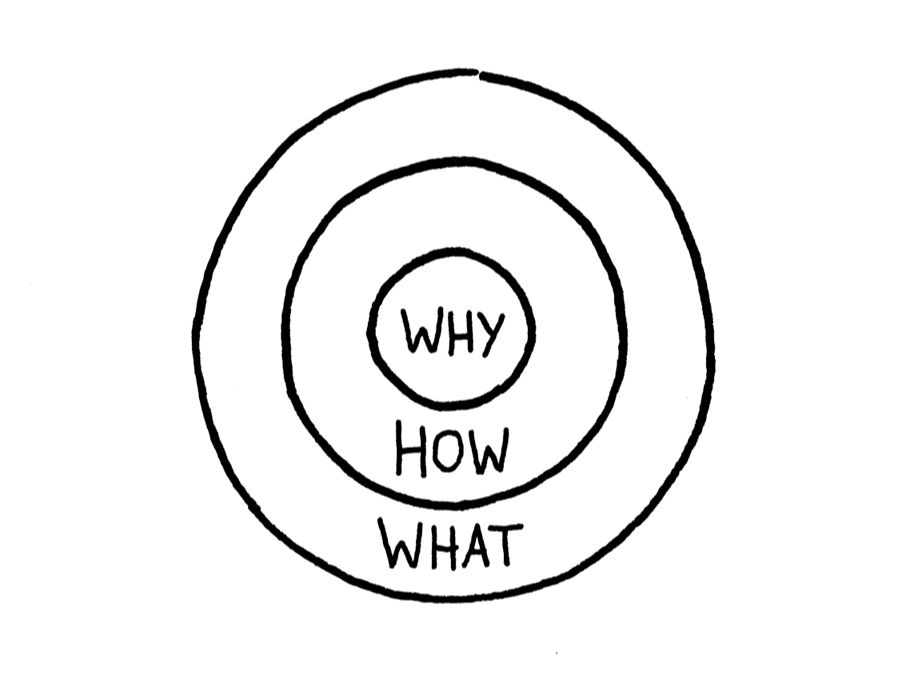
Apr 13, 2015 | Conflict Management

Recently, I was engaged with a client that had undergone a merger. The transition was going reasonably well overall; however, the combined management teams were entangled in challenge and conflict as they attempted to bring together organization functions, structures, and policies.
Conflict among peers brings with it unique nuances that are different than conflict with a boss or direct report. In this situation, it’s generally a relationship of equals and, as such, it’s especially important to consider positional and personal power, influence, and interpersonal savvy. And like all conflict, it shouldn’t be avoided, but rather managed and resolved through a thoughtful process.
Because organizations rely so heavily on collaborative peer relationships (one-on-one or in teams) to achieve results, using a conflict management process that centers on partnership can be a successful strategy for reaching solution. An important first step is to identify common ground that colleagues can agree on.
Working with this newly merged leadership team, we first considered the following, the knowledge of which provided greater context before diving into the particular issues:
- Get to know your peers – who they are, how they respond to specific emotional triggers, what they value, what kind of organizational power they have.
- Think about who you are within that mix – your own responses, values, and power.
- Together, identify “rules of engagement” and how you will address conflict. Establish clear norms, keep these visible and present, and hold everyone accountable for what they’ve agreed upon. It’s important to ensuring a productive exchange of ideas.
Next, we advanced through a series of steps to successfully work through and resolve the conflict:
Define the problem: Create a clear picture of the challenge, describing it in detail, for example: What are the circumstances around it? What are the different perspectives each person brings? What behaviors are team members observing, both among themselves and others? What are the thoughts and feelings about the conflict?
Gather information: Keep it focused on ideas and procedures, not on emotions. Make sure you understand the facts behind the issue that spawned the conflict. Do you and your peer have opposing strategies or tactics for achieving a specific objective? Think through your ideas and give your peer’s ideas due consideration.
Look for options and different perspectives: Find the missing piece. Seek advice from a trusted external source whose opinions and perceptions differ from your own. Use that to help you work through the situation.
Envision a solution: Based on what you know and have learned, imagine how the conflict might play out. If it’s helpful, try writing a short “script” or talking through the scenario with a partner using the following as a guideline:
- Establish rapport and set the stage: How can you break the ice and lay the groundwork for a discussion? Think of what you might actually say.
- Describe the situation and the behavior. How can you state clearly and objectively what you want in a way that is less likely to provoke excessive defensiveness? Plan what you will say.
- Prepare for the interaction: Outline how the other person might respond and what you will say in response.
- Review and reflect: Answer the following after your meeting: What did you learn? What worked? What could be improved?
Evaluate the answer: Focus your plan on ideas and procedures. If you keep your conflict management plan close to that path, then you and your peer have a better chance of creating a successful resolution.
Learn from the experience: After you resolve the conflict, debrief the process with yourself and with your conflict partner, if possible. Did the resolution of the conflict settle the issue? Did it improve your relationship with your peer? If you can’t answer yes to both of these questions, then start planning for the next conflict with this peer. It may take the process more than once to establish rapport, settle an issue, and establish a way of working together through challenges.
It amazes me the degree to which business success depends on the ability of leaders to work together collaboratively and how little time and preparation is typically taken from the start to establish the essential foundation of trust and a true sense of “team.” Like my recently merged client organization, leaders frequently jump into their day-to-day execution of priorities as if they have a historical context of working together, and quickly encounter clashes with values, expectations, incorrect assumptions, and more. Its no wonder they encounter such blocks and barriers.
These steps provide critical considerations as you examine your approach to managing conflict with peers. But before you adopt these tactics, be sure you understand as much about yourself and your peer as you can. Your success at managing peer conflicts relies on your understanding how emotional hot buttons, personal values, and organization and personal power affect, and are affected by, conflict situations and how they influence the resolution.
________
Cartwright, T. (2003). Managing conflict with peers. Greensboro, NC: Center for Creative Leadership.
Also read these related posts:
Perspectives on Conflict with Your Boss
Bridge the Divide of Conflict With Direct Reports
Team Trust – Critical Yet Rare
Into the Storm: Mastering Team Conflict
 About Jeanie Duncan: Jeanie is President of Raven Consulting Group, a business she founded that focuses on organizational change and leadership development in the nonprofit sector. She is a senior consultant for Raffa, a national firm working with nonprofit clients to lead efforts in sustainability and succession planning, executive transition and search. Additionally, Jeanie serves as adjunct faculty for the Center for Creative Leadership, a top-ranked, global provider of executive leadership education.
About Jeanie Duncan: Jeanie is President of Raven Consulting Group, a business she founded that focuses on organizational change and leadership development in the nonprofit sector. She is a senior consultant for Raffa, a national firm working with nonprofit clients to lead efforts in sustainability and succession planning, executive transition and search. Additionally, Jeanie serves as adjunct faculty for the Center for Creative Leadership, a top-ranked, global provider of executive leadership education.

Mar 21, 2015 | Conflict Management, Leadership
 As a sailor, when I see a storm building on the horizon, I intentionally alter my path to circumvent the system – tacking to port or starboard, or identifying a cove or marina to head into for safety…anything to escape the danger that lies ahead.
As a sailor, when I see a storm building on the horizon, I intentionally alter my path to circumvent the system – tacking to port or starboard, or identifying a cove or marina to head into for safety…anything to escape the danger that lies ahead.
In the business setting, our human tendency is to do the same – avoid the storm, the conflict, that we see brewing. We are a conflict-adverse culture and society. Often, our last (or near last) resort is moving directly into the issue, tension, and challenge to attend to what must be addressed.
So, why is this? Why do we avoid addressing and resolving conflict? Why is it so difficult? Afterall, it’s often identified as one of the most important competencies required of top leaders to succeed. Beyond the fact that conflict is flat out uncomfortable, I believe our aversion is due to a few key things:
- Many of us learn early on in our formative years to avoid making waves, to listen to others, and be polite. Personally, as a female growing up in the southeastern United States, I often would say one thing and mean another – too afraid to share my true thoughts and risk offending someone. My parents, as well as others who shaped and influenced me early on, taught me that questioning and being direct was considered rude, bossy, and aggressive, so I simply didn’t practice it.
- When starting out in our careers, we’re young, new in a position, trying to gain an understanding of the office culture, and learning the political landscape. We’re encouraged (whether expressed or not) to be tactful and diplomatic – “keep your head down and get the job done” – or else become known as the difficult employee…sometimes risking losing our job altogether.
- When we advance and move from a role as an individual contributor to a role of leading others, the relationships necessary for working together often spawn conflict. Our tendency can be to revert back to what we know well – our individual strengths, whether technical, financial, sales, etc. – and avoid the sticky, messy group dynamics of gaining alignment and commitment to work toward a common goal. We can also avoid acting as a result of preservation (of relationships, tradition, etc.) and territory, digging our heels in to protect our own viewpoints, values, and beliefs and refuse to move.
Conflict is difficult for a number of reasons – those mentioned above and others you can surmise. But difficult as it may be, addressing and resolving conflict is critically important to individual and organization success. It begins with defining what conflict is in the first place and understanding it as something to be dealt with instead of avoided.
At its core, conflict is disharmony and discord between people, interests, or ideas. It’s also natural to the human experience. Where there are people, there will be conflict. Afterall, people are emotional beings. We have deeply held beliefs, values, and experiences that have shaped who we are. We’re bound to bring this into how we express ourselves, make decisions, and communicate with one another. And when we do, we will differ, disagree, and sometimes clash. The key to making it work and being effective, is to learn to have open, honest debate and dialogue around issues of importance to the team. It can only happen if vulnerability-based trust exists.
Teams without trust often argue destructively because they are laced with politics, pride, and competition, rather than humble pursuit of truth. When trust exists, team members say everything that needs to be said and it leaves less to talk about behind closed doors. Conflict is always at least a little uncomfortable. And it’s inevitable that people will feel under some degree of personal attack. This is still no reason to avoid conflict.
As Patrick Lencioni states in his book, The Five Dysfunctions of a Team, “If team members are not making one another uncomfortable at times, if they’re never pushing one another outside of their emotional comfort zones during discussions, then it is extremely likely that they’re not making the best decisions for the organization.”
The problem around conflict that I most often see in relationships and teams is artificial harmony with no conflict at all, coupled with great fear of moving in that direction. It reminds me of a friend who told me that he and his girlfriend of two years had never had an argument. He shared this as a point of pride; however, I see this as a warning sign. The ability to have healthy, productive conflict is a symbol of maturity and sustainability in a relationship. When a relationship or team shows that it can survive an incident of significant conflict, it builds greater trust and confidence in the relationship.
Let’s examine a few key practices to engaging in and managing team conflict:
- Begin with trust building exercises. A team (or a relationship of any kind) and its members must know and trust one another before it can engage in courageous conversations and move into and through conflict together. (See key tips in my blog post: Team Trust – Critical Yet Rare)
- Identify “rules of engagement” and how you will address conflict together. Establish clear norms, keep these visible and present, and hold everyone accountable for what they’ve agreed upon. It’s important to ensuring a productive exchange of ideas.
- Gain clarity on viewpoints and comfort levels with conflict, because they can differ greatly. On one extreme are the people who are comfortable arguing passionately; on the other are those who are not comfortable expressing the mildest of dissention. Know where your team members fall, why they fall there, and what’s important to them as you work together to address conflict.
- Be clear on role clarity and alignment. Individual team members need to be crystal clear on their own role, how their role supports the team’s work, and how the collective team’s work supports the organization’s mission.
- Create a feedback rich environment in the spirit of understanding one another’s behaviors and the impact of those behaviors on teamwork and effectiveness. Foster a culture that encourages team members to give feedback to one another in a positive, non-judgmental manner, and then members use that feedback to shape and adapt their behaviors to yield the greatest results.
- Leaders must be miners of conflict. It’s important for a leader “not only to light the fuse of good conflict, but also to gently fan the flames,” states Lencioni. “Even when team norms for conflict have been set, most people will shy away from conflict.” Seek out opportunities for unearthing buried conflict and require team members to address the issues. An issue lying dormant is merely simmering beneath the surface and can be on the verge of erupting…or can quietly undermine progress.
Given human nature and the pressures of organizational life, there’s likely to always be conflict wherever people are together. But this conflict can be managed so that it’s a productive encounter that leaves individuals engaged in their work, honored and supported for their ideas and beliefs, and the organization on a path to mission delivery success.
_______
Lencioni, P. (2005). Overcoming the five dysfunctions of a team: a field guide. San Francisco: Jossey-Bass.
Also read these related blog posts:
Perspectives on Conflict with Your Boss
Bridge the Divide of Conflict with Direct Reports
Team Trust – Critical Yet Rare
A Process for Managing Peer Conflict
 About Jeanie Duncan: Jeanie is President of Raven Consulting Group, a business she founded that focuses on organizational change and leadership development in the nonprofit sector. She is a senior consultant for Raffa, a national firm working with nonprofit clients to lead efforts in sustainability and succession planning, executive transition and search. Additionally, Jeanie serves as adjunct faculty for the Center for Creative Leadership, a top-ranked, global provider of executive leadership education.
About Jeanie Duncan: Jeanie is President of Raven Consulting Group, a business she founded that focuses on organizational change and leadership development in the nonprofit sector. She is a senior consultant for Raffa, a national firm working with nonprofit clients to lead efforts in sustainability and succession planning, executive transition and search. Additionally, Jeanie serves as adjunct faculty for the Center for Creative Leadership, a top-ranked, global provider of executive leadership education.

Feb 23, 2015 | Leadership

The foundation of any highly functioning team is trust. While critically important, it can be rare among teams, and we all know it takes time and intentional practice to build. Trust is all about vulnerability – get comfortable being open, honest, and ‘exposed’ to one another around failures, challenges, and areas for development and trust begins to emerge. The process is well worth the effort invested and can be cultivated with sustained intention, purpose, and focus.
In many workplaces, what we find is a group of individuals who have been hired over time and are expected to begin working together without any prior relationships or baseline of trust being formed. They may even call themselves a team, but in reality, they’re individual performers charged with accomplishing a group goal. This is very different from a “team.” And it’s not a formula for success, especially in light of challenges and potential conflict inherent to any project or task.
Try these trust-building exercises to help develop a strong, highly functioning team:
- In his book “Overcoming the Five Dysfunctions of a Team,” Patrick Lencioni shares the Personal Histories Exercise. It works like this: At a staff meeting, go around the room and have each person respond to a question (or questions) that requires them to share something personal and relevant. For example, the author offers this three-part question: 1) Where they grew up, 2) How many kids were in the family, and 3) What was the most difficult or important challenge of their childhood. In responding, the group learns a lot about one another, and in the process, they become more comfortable being open about other things. Empathy develops, and it also helps individuals overcome what Lencioni calls the fundamental attribution error, where we tend to falsely attribute the negative behaviors of others to their character (false conclusion: people do bad things because they’re bad).
- Administer a behavioral assessment with a team – a tool that will provide an objective, reliable means for understanding and describing one another. There are many from which to select – Meyer’s Briggs, DISC, Strengths Deployment Inventory, to name a few – and each can be an effective means to self-identify their ‘type’ and provide a common vocabulary to describe similarities and differences. Such a tool can be completed with a team in as little as a couple of hours or extended to a half- or full-day experience.
- Another proven way for a team to learn to work together to build trust is to attend a high initiative or ropes course. This experience typically takes at least a half-day and is offered to teams by independent training organizations. Hanging at the end of each other’s rope is a great way to increase risk taking and trust levels, using an ultra safe and highly supervised course.
Key to making any of these exercises work is to anticipate initial objections and have proper facilitation. These experiences, when implemented well, can establish a foundation of team trust and set a path for achieving great results together.
_______
Lencioni, P. (2005). Overcoming the five dysfunctions of a team: a field guide. San Francisco: Jossey-Bass.
Also read these related blog posts:
Perspectives on Conflict with Your Boss
Bridge the Divide of Conflict with Direct Reports
Into the Storm: Mastering Team Conflict
A Process for Managing Peer Conflict
 About Jeanie Duncan: Jeanie is President of Raven Consulting Group, a business she founded that focuses on organizational change and leadership development in the nonprofit sector. She is a senior consultant for Raffa, a national firm working with nonprofit clients to lead efforts in sustainability and succession planning, executive transition and search. Additionally, Jeanie serves as adjunct faculty for the Center for Creative Leadership, a top-ranked, global provider of executive leadership education.
About Jeanie Duncan: Jeanie is President of Raven Consulting Group, a business she founded that focuses on organizational change and leadership development in the nonprofit sector. She is a senior consultant for Raffa, a national firm working with nonprofit clients to lead efforts in sustainability and succession planning, executive transition and search. Additionally, Jeanie serves as adjunct faculty for the Center for Creative Leadership, a top-ranked, global provider of executive leadership education.

Feb 10, 2015 | Leadership
I recently completed some forecasting and goal setting for my business. As I went through this process, I pulled from several resources that inspire and motivate me, a favorite of which is Simon Sinek’s “Start With WHY.” He expresses his message through what he calls The Golden Circle:

His premise is that you must begin with your WHY, and from there figure out your HOW and WHAT. When Sinek studied successful leaders, he found a common denominator – they inspire through a clearly and passionately articulated WHY. They hold their WHY front and center – like a North Star – to guide their WHAT and HOW. Everything emerges from the core WHY, or belief. HOWs are the actions they take to realize that belief. And WHATs are the results of those actions.
I’ve known about Sinek’s philosophy for a while, but I find even greater meaning in it now – not only for my own personal and business reflection, but also for my clients.
According to this line of thought, most every person and organization knows WHAT they do. That’s usually pretty clear. Some know HOW they do it. But very few know WHY they do WHAT they do. Or at least they don’t stop to think about it or articulate it frequently and consistently.
By WHY, Sinek doesn’t mean ‘to earn revenue,’ but rather, he’s referring to your purpose, your cause, your belief. Sinek asks, “WHAT makes you get out of bed in the morning? WHY do you care? And WHY should others care?” Think of it as communicating from the inside out.
Think for a moment – We busily go about our day-to-day. We take on roles, assignments, projects, and business…and before long we’ve amassed this huge volume of ‘stuff’ without pausing to think about WHY we’re doing it. Even if we know our WHY, we can fail to consciously use it as our lens or filter for making decisions.
As I went through my own reflection, I see room for getting clearer with my own “WHY” and doing a better job of sharing my story.
A theme for me over my life is that I’m a self-starter and risk taker. I grew up in an entrepreneurial family with my parents owning two businesses. My siblings and I were involved in those businesses where there was no task too great or small; we all pitched in to get it done. And if we didn’t know how to do it, we figured it out. Failures were acknowledged as just one step closer to succeeding.
When I finished college, my first jobs were new positions where I was responsible for creating the role. Later on, I set my vision and sites for what I wanted and set out to achieve it, including starting my own business. Through it all, I didn’t have all the information, the guidelines were ambiguous, and I needed to perform and produce results fast. I quite like this messiness – stepping into the unknown, bringing order to chaos, and charting a course where there isn’t one.
This pattern and energy shapes my WHY – To help people know WHAT they want, find their courage, step forward, and take risks. This is the path to which my life and my work is devoted.
Sinek offers, “People don’t buy WHAT you do. They buy WHY you do it. People don’t buy WHAT you sell. They buy WHAT you believe. And people follow you not because they have to, not because they are paid to, but because they want to.”
This concept comes alive every day in business:
- Strategy Development: For an organization to develop its goals, strategies, and tactics, it must first be crystal clear on its WHY, often presented most succinct in a well-crafted vision and mission. As Sinek offers, “It’s not just WHAT or HOW you do things that matters; what matters more is that your WHAT and HOW is consistent with your WHY.” With a WHY clearly stated in an organization, anyone within the organization can make a decision as clearly and as accurately as the top leader.
- Sustainability Planning: The products and services offered by many organizations are broad and complex. It’s important to critically and regularly examine these lines of business and ask, “WHY do we do this,” looking at both mission impact and financial return to gauge long-term sustainability. Yet, we can get so caught up in the day-to-day, that our WHAT mutates into a complex web without a clear connection to vision and mission, and with limited (or lost) return on investment.
- Succession Planning and Leadership Transitions: Sinek concludes that top executives are successful in great part because they inspire and embody what they believe. When the person who personifies the WHY departs without clearly articulating WHY the company was founded in the first place, they leave no clear cause for their successor to lead. “Successful succession is more than selecting someone with an appropriate skill set – it’s about finding someone who is in lockstep with the original cause around which the business was founded. Great 2nd and 3rd CEOs don’t take the helm to implement their own vision of the future; they pick up the original banner and lead the company into the next generation.”
I encourage you to get to your WHY. It yields greater confidence than ‘I think it’s right.’ It’s more scalable than ‘I feel it’s right.’ When you know your WHY, the highest level of assurance you can offer is, ‘I know it’s right.’
_______
Sinek, S. (2009). Start with why: how great leaders inspire everyone to take action. New York: Penguin Group.
 About Jeanie Duncan: Jeanie is President of Raven Consulting Group, a business she founded that focuses on organizational change and leadership development in the nonprofit sector. She is a senior consultant for Raffa, a national firm working with nonprofit clients to lead efforts in sustainability and succession planning, executive transition and search. Additionally, Jeanie serves as adjunct faculty for the Center for Creative Leadership, a top-ranked, global provider of executive leadership education.
About Jeanie Duncan: Jeanie is President of Raven Consulting Group, a business she founded that focuses on organizational change and leadership development in the nonprofit sector. She is a senior consultant for Raffa, a national firm working with nonprofit clients to lead efforts in sustainability and succession planning, executive transition and search. Additionally, Jeanie serves as adjunct faculty for the Center for Creative Leadership, a top-ranked, global provider of executive leadership education.

Jan 22, 2015 | Focus
It topped 50 degrees last Sunday…almost enough to give me some early spring fever in January. I decided to curl up in my window seat, enjoy the warm sunshine, and savor a thought provoking read, “The Power of Less” by Leo Babauta. In keeping with his mantra, the book is brief enough to finish in an afternoon. Bonus!
Just three days later, I can’t stop thinking about his core principles. I find them so meaningful and effective that I’d like to highlight a few. I’m especially enjoying the one “simple focus.” What a difference I’m experiencing with only a few days of intentional practice. I hope you’ll give them a try too!

Set Limits
We live in a world where we’re overwhelmed with ‘stuff.’ Our homes are filled with too many things. Our days are packed with an unending string of meetings and tasks. The inbox overflows with dozens of emails. We have too much – clutter, information, tasks, and choices. It simply won’t all fit.
With a ‘less is more’ framework, Babauta encourages a life with limits. “Setting limits simplifies things, focuses our energy, highlights the important, and makes us more effective.” It’s as if time and space expand.
This week, I’m paying more attention to when and where I feel the overload and need for cutting back. I’ve turned off the distracting visual email prompts, assessed meeting invitations with a new lens and declined more than typical, and reduced the number of blogs and listserves to which I subscribe. Already, it feels freeing.
Choose the Essential and Simplify
Choosing the essential is the key to simplifying – you have to choose the essential before you simplify, or you risk eliminating things without keeping the most important. “Simplifying isn’t meant to leave your life empty – it’s meant to leave space for what you really want to do.”
For me, getting to the essential starts with eliminating the non-essential – like the quote from sculptor Michelangelo, “I saw the angel in the marble and carved until I set him free.”
However you get there, once you know what’s essential, you reduce projects, tasks, commitments, and clutter. In my work with my executive coaching clients, an important part of the process is for a client to know his/her core values, set goals, and confirm what’s most important and brings you the greatest joy.
Simple Focus
 The “Power of Less” presents focus as the most important and powerful tool – “focus on less to become more effective.” Intellectually, I get it, but practice it is far more difficult. Here’s what helps me most:
The “Power of Less” presents focus as the most important and powerful tool – “focus on less to become more effective.” Intellectually, I get it, but practice it is far more difficult. Here’s what helps me most:
- Identify the most important priorities (and tasks).
- Keep these front and center. I do this by creating an annual plan, then breaking that down by quarter, month, week, and day.
- Begin each day by focusing on the most important tasks, executing these one at a time until complete.
- Resist checking email and exploring the internet first thing in the day, otherwise I become occupied by urgent or intriguing distractions.
- Focus on the present instead of the past or future. This is so challenging! I compare it to attempting to quiet my mind during meditation. It helps to practice with the simple things in my day – eating, driving, sleeping – focusing only on that, and enjoying it. When I can do that, it feels like pure flow.
Start Small
Send your overachiever to time out! Starting small is simply a way to ensure the greatest likelihood of success for all the other changes.
Think of the fail rate with New Year’s resolutions: we start the year excited and rearing to go. Like a Thoroughbred out of the gate, we charge forward – make the first lap and maybe a second, and then start to lose steam or quit altogether. The value of setting realistic, achievable goals is important to have any chance of success.
This reminds me of when I began running. My son was in the 4th grade at the time and asked me to run with him to prepare for his school’s 1-mile event. For a week or two, we practiced together, and he accomplished his goal. Next, we decided to sign up for a local 5K. We completed it, and by then I began to enjoy running.
For the next year, I ran several community 5K events. I decided to step it up and run 10Ks the next year. Then, in year three, I trained for and ran my first half marathon. Now, eight years later, I’ve completed about ten half marathons. Starting small was key to my running success and sustainability.
Declutter
This principle begins with “A clean desk allows you to focus on the task at hand, which is key to being effective in whatever you’re trying to do.” So today, in honor of this idea, I cleaned up my office and desk. Maybe it’s just in my head, but afterward I swear I was able to think more clearly and accomplish more.
Another way I’ve practiced this principal recently is conducting a home inventory and identifying things we no longer use. We’ve made countless trips to our local Goodwill, learned how to “do eBay,” and have experienced good success in selling many items. It’s inspired us to set new goals geared toward decluttering and downsizing, like:
- Set aside time to clean out.
- Start simple – with one room, a closet, or a drawer
- Handle paperwork only once, taking immediate action (like paying a bill), filing, or tossing it.
- Have a home for everything and keep things in their place.
- For every item you bring into your home, remove something of equal size and significance.
Slow Down
Years ago, I decided to take a sabbatical for a few months. One of the first things I experienced was a much slower pace. I stepped off the frantic work treadmill, engaged in some creative pursuits, and savored the foreign white space on my calendar. My friends worried that the change was so abrupt, I would need therapy. Not the case!
Before this “time out,” my life was jam-packed. I never completed a task list, rushed everywhere I went, and felt behind, late, and exhausted. I had enthusiastically signed up for this career and professional leadership role, but I didn’t want to live my life like this.
As Babauta states in his book, “We were not made to function this way…the stresses of constant overload and a constant hectic pace for every waking moment.” The paradox is to slow down to be happier, more effective, and productive.
During my time off, I consciously slowed down. I ate slower, walked slower, drove slower. Here’s a novel idea: when you eat, just eat. Enjoy it. Savor it. Truly taste it. Try the same for driving: appreciate the complete experience of driving and notice what’s around you. Do you ever arrive at a destination and have no recollection of how you got there? My goal then and still today is to shift away from that and be fully present with whatever I’m doing. I probably fail more than I succeed, but this book is a great reminder to re-focus.
 About Jeanie Duncan: Jeanie is President of Raven Consulting Group, a business she founded that focuses on organizational change and leadership development in the nonprofit sector. She is a senior consultant for Raffa, a national firm working with nonprofit clients to lead efforts in sustainability and succession planning, executive transition and search. Additionally, Jeanie serves as adjunct faculty for the Center for Creative Leadership, a top-ranked, global provider of executive leadership education.
About Jeanie Duncan: Jeanie is President of Raven Consulting Group, a business she founded that focuses on organizational change and leadership development in the nonprofit sector. She is a senior consultant for Raffa, a national firm working with nonprofit clients to lead efforts in sustainability and succession planning, executive transition and search. Additionally, Jeanie serves as adjunct faculty for the Center for Creative Leadership, a top-ranked, global provider of executive leadership education.

 About Jeanie Duncan: Jeanie is President of Raven Consulting Group, a business she founded that focuses on organizational change and leadership development in the nonprofit sector. She is a senior consultant for Raffa, a national firm working with nonprofit clients to lead efforts in sustainability and succession planning, executive transition and search. Additionally, Jeanie serves as adjunct faculty for the Center for Creative Leadership, a top-ranked, global provider of executive leadership education.
About Jeanie Duncan: Jeanie is President of Raven Consulting Group, a business she founded that focuses on organizational change and leadership development in the nonprofit sector. She is a senior consultant for Raffa, a national firm working with nonprofit clients to lead efforts in sustainability and succession planning, executive transition and search. Additionally, Jeanie serves as adjunct faculty for the Center for Creative Leadership, a top-ranked, global provider of executive leadership education.






